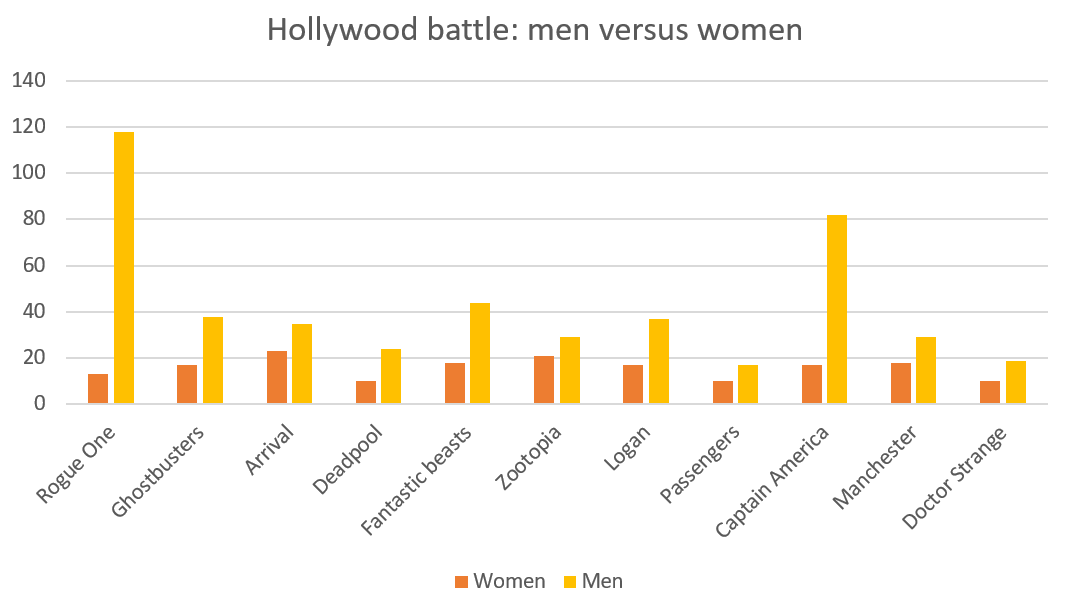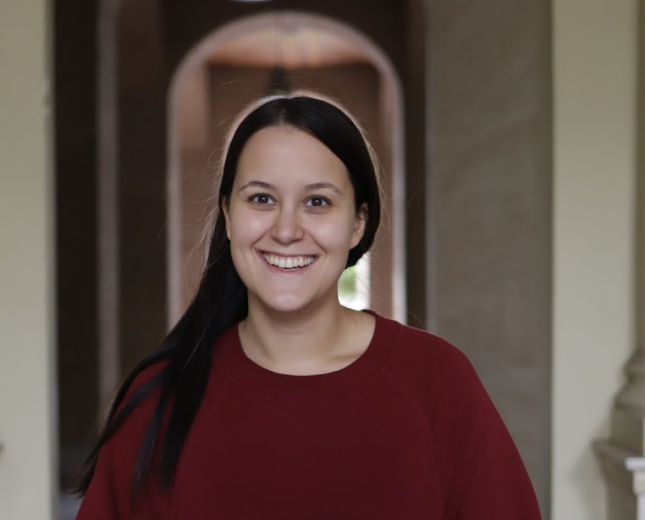The world has about the same number of men and women. More exactly, in 2015, 49.5 % of the population were women, 50.5 were men (at least that’s what the World Bank’s data claims). But when you watch Hollywood movies, you can easily start thinking that the world is on the brink of extinction, because the male:female ratio is about 70:30. Who will give birth in their male world? We’re doomed, I tell you! Doomed!
In all seriousness though: I have had enough of going to the movies or sitting in front of the TV and wasting two hours to watch a programme that has predominantly male characters. It wouldn’t be that bad if it only happened once every couple of movies, but it happens all the time. Why did I get to this topic today? I watched the new Star Wars movie again yesterday and … got pretty freaking mad. Rogue One is a movie with a main female character, which could almost mean that the male:female ratio would be a bit better, right? Wrong. In Rogue One there is altogether 13 women and 118 men. From this, 3 women play the same character, so it’s actually 11 female characters versus 118 male. How?!? How do you manage to hire such an unequal number of background actors, when half of the world population is female?
The funniest thing is that nobody listens to women when they say they miss female characters, but men are the ones who loudly complain when the tables are turned. When Ghostbusters returned in 2016 with a female cast, men were immediately outraged how that was possible. Their world broke down just because one popular movie amongst hundreds had a majorly female cast. And that’s not even true! Among the main actors, listed on IMDb, there are 17 female roles and 38 male ones! The ratio is still on the side of men and they find it incomprehensible, just because women are the ones who have more screen time.*
*And, let’s be real here, it’s also because these women aren’t models and don’t exist only to fulfill men’s wildest fantasies. Women who watched Ghosbusters were thrilled about the smart, well-developed characters. Men felt betrayed, because Jillian Holtzmann might be a blond babe but she’s also so gay that even they can’t deny it. No matter how hard they try.
These are only two examples. Other movies aren’t an exception, so let’s take a couple of popular movies of the past year or so:
- Rogue One: 13 women, 118 men.
- Ghostbusters: 17 women, 38 men.
- Arrival: 23 women, 35 men. Nearly half-half. If we’re a bit blind. Not that bad.
- Deadpool: 10 women, 24 men.
- Fantastic Beasts and Where to Find Them: 18 women, 44 men.
- Zootopia: 21 women, 29 men. Proof that you need to watch animated movies.
- Logan: 17 women, 73 men.
- Passengers: 10 women, 17 men.
- Captain America: Civil War: 17 women, 82 men.
- Manchester by the Sea: 18 women, 29 men.
- Doctor Strange: 10 women, 19 men.
I mean, really? You spend billions of dollars on a movie and find it completely sensible, but finding an equal number of actors and actresses is apparently inconceivable. You know how this looks in a graph? It just looks sad.

I used bright colours to cheer myself up. It didn’t work.
There are many other problems here. If I only list a few: wage gap between actors and actresses, demand for young actresses and ignoring those above 30, lack of female writers, female characters that are far from passing the Bechdel test, the inability of male writers to write good female characters, and so on.
*The Bechdel test asks each movie or book whether it contains at least two women, who are talking and whose conversation does not revolve around a man. A surprising amount of movies completely fail this test.
I’m not even going to get started on the fact that the world according to Hollywood is white, and actors of others races have to fight for roles that (in many cases) then go to white actors. For example Benedict Cumberbatch in the role of Doctor Strange, who was supposed to have Indian origins, or Emma Stone in the role of a Hawaiian girl. It’s like agents don’t realize that these are actual countries that have actors as well. Because, you know, Bollywood isn’t a big industry at all and doesn’t have thousands of popular actors …
The worst thing is that we don’t even notice this anymore. We’re used to seeing men in the background of our films and shows, and we don’t even realize that we can’t not internalize such a worldview. We don’t know how this impacts future generations, who also use media to create an opinion of how things should be. Do we really want to show them that they are only visible if they’re men?
*Za slovensko verzijo tega teksta kliknite tukaj.*

